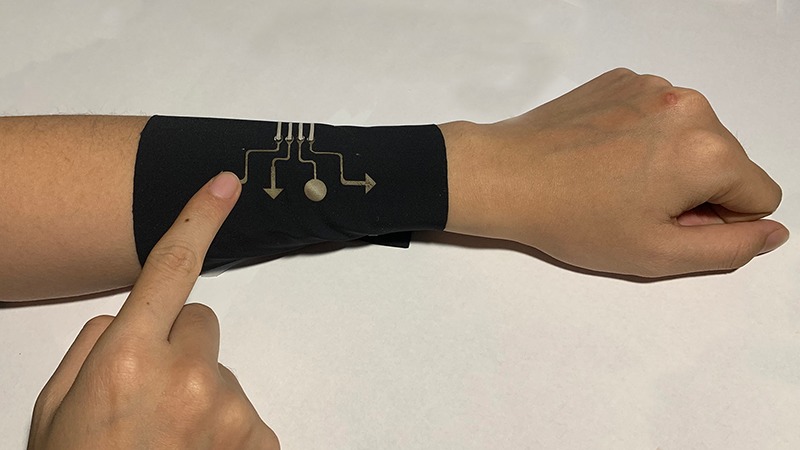Stretchable electronics is a technology field with revolutionary potential. They provide consumers with highly personalized experiences. This technology can be used to monitor vital signs for an extended period of time. However, there’s one big hurdle to its usability, and that is the lack of breathability. Now, researchers at North Carolina State University have created ultrathin, stretchable electronic material that is gas permeable, allowing the material to “breathe.”
Read more Report: Stretchable Electronics Market Will Grow to $500M Within a Decade
The material was designed specifically for use in biomedical or wearable technologies, since the gas permeability allows sweat and volatile organic compounds to evaporate away from the skin, making it more comfortable for users – especially for long-term wear, reports NC State News.
“The gas permeability is the big advance over earlier stretchable electronics,” says Yong Zhu, co-corresponding author of a paper on the work and a professor of mechanical and aerospace engineering at North Carolina State University. “But the method we used for creating the material is also important because it’s a simple process that would be easy to scale up.”
A technique called the breath figure method was used to create a stretchable polymer film featuring an even distribution of holes. The film is coated by dipping it in a solution that contains silver nanowires. The researchers then heat-press the material to seal the nanowires in place.

“The resulting film shows an excellent combination of electric conductivity, optical transmittance, and water-vapor permeability,” Zhu says. “And because the silver nanowires are embedded just below the surface of the polymer, the material also exhibits excellent stability in the presence of sweat and after long-term wear.”
“The end result is extremely thin – only a few micrometers thick,” says Shanshan Yao, co-author of the paper and a former postdoctoral researcher at NC State who is now on faculty at Stony Brook University. “This allows for better contact with the skin, giving the electronics a better signal-to-noise ratio.
“And gas permeability of wearable electronics is important for more than just comfort,” Yao says. “If a wearable device is not gas permeable, it can also cause skin irritation.”
Read more Scientists Develop Stretchable Wireless Sensor to Monitor Healing of Cerebral Aneurysms
The researchers tested their prototypes in two representative applications. In one of the tests, the authors used a wearable textile sleeve integrated with the porous electrodes to play computer games such as Tetris (Related video can be seen below).
“If we want to develop wearable sensors or user interfaces that can be worn for a significant period of time, we need gas-permeable electronic materials,” Zhu says. “So this is a significant step forward.”
The paper is published in the journal ACS Nano.












